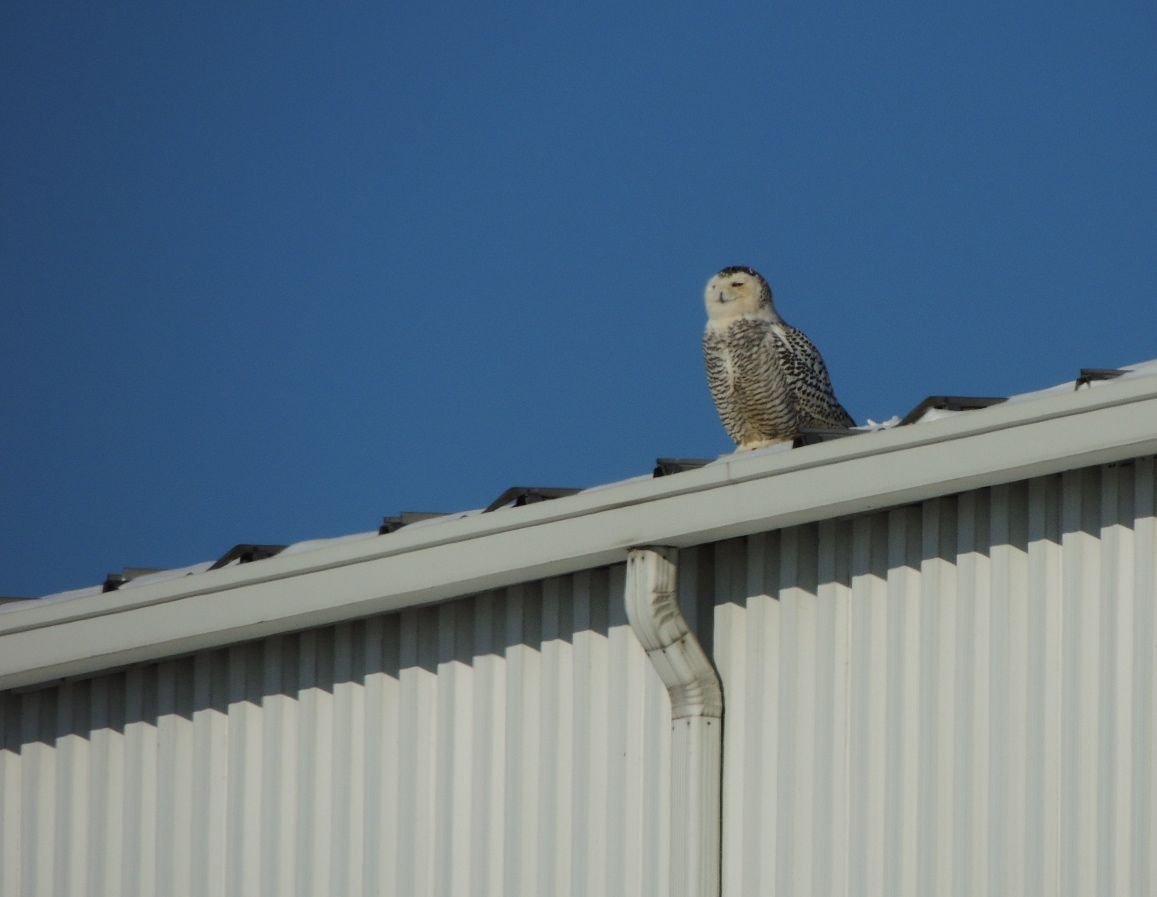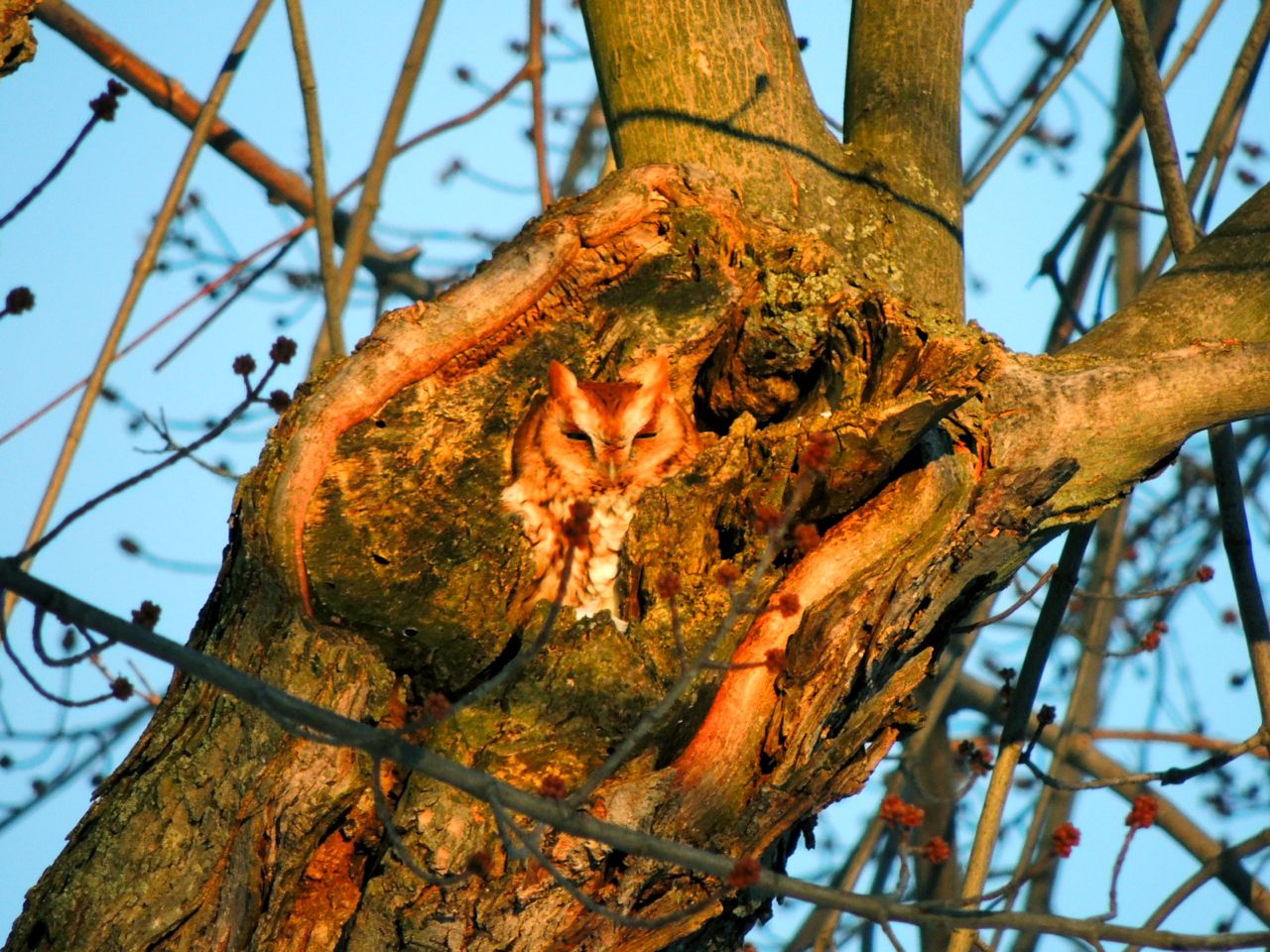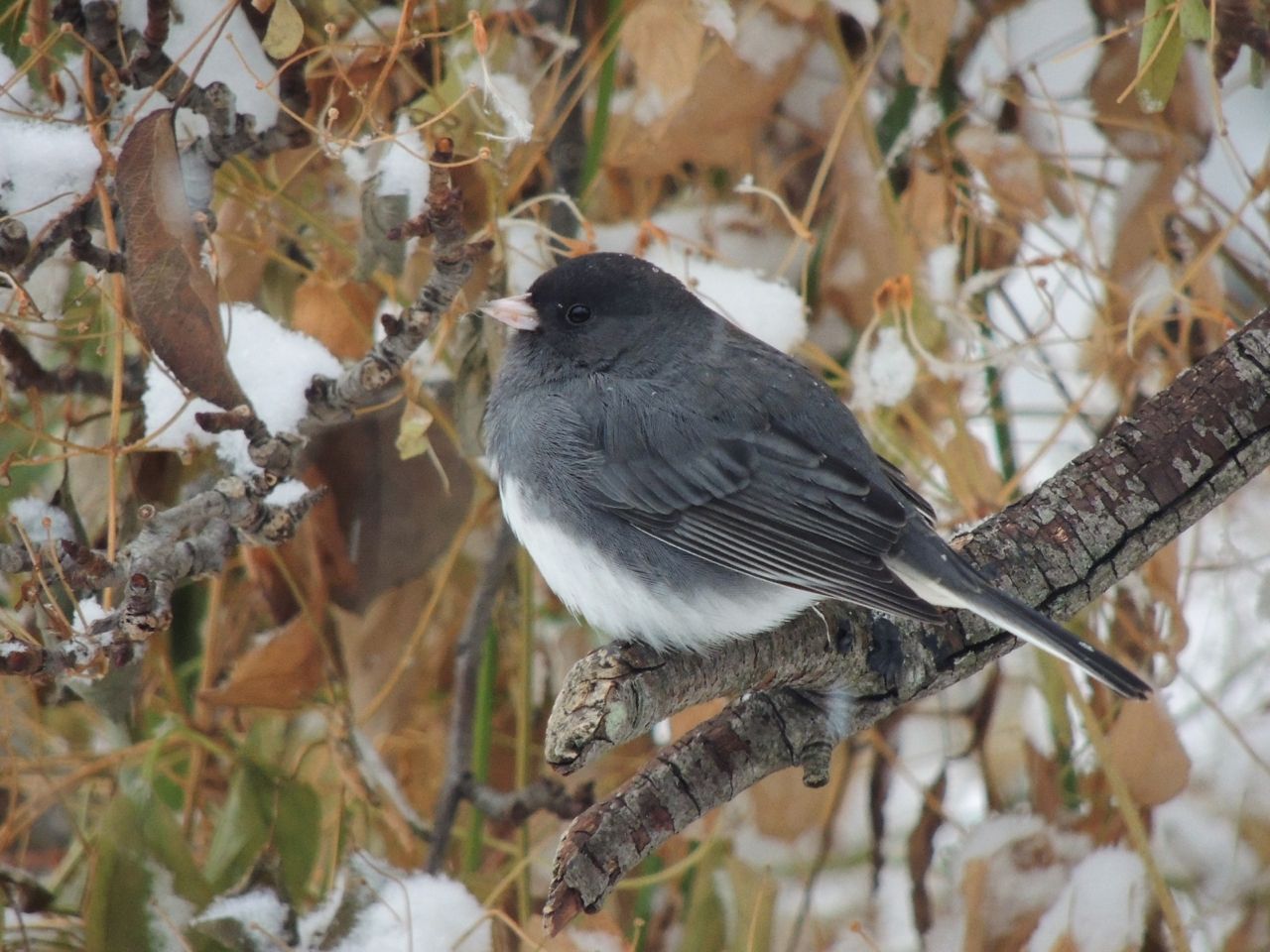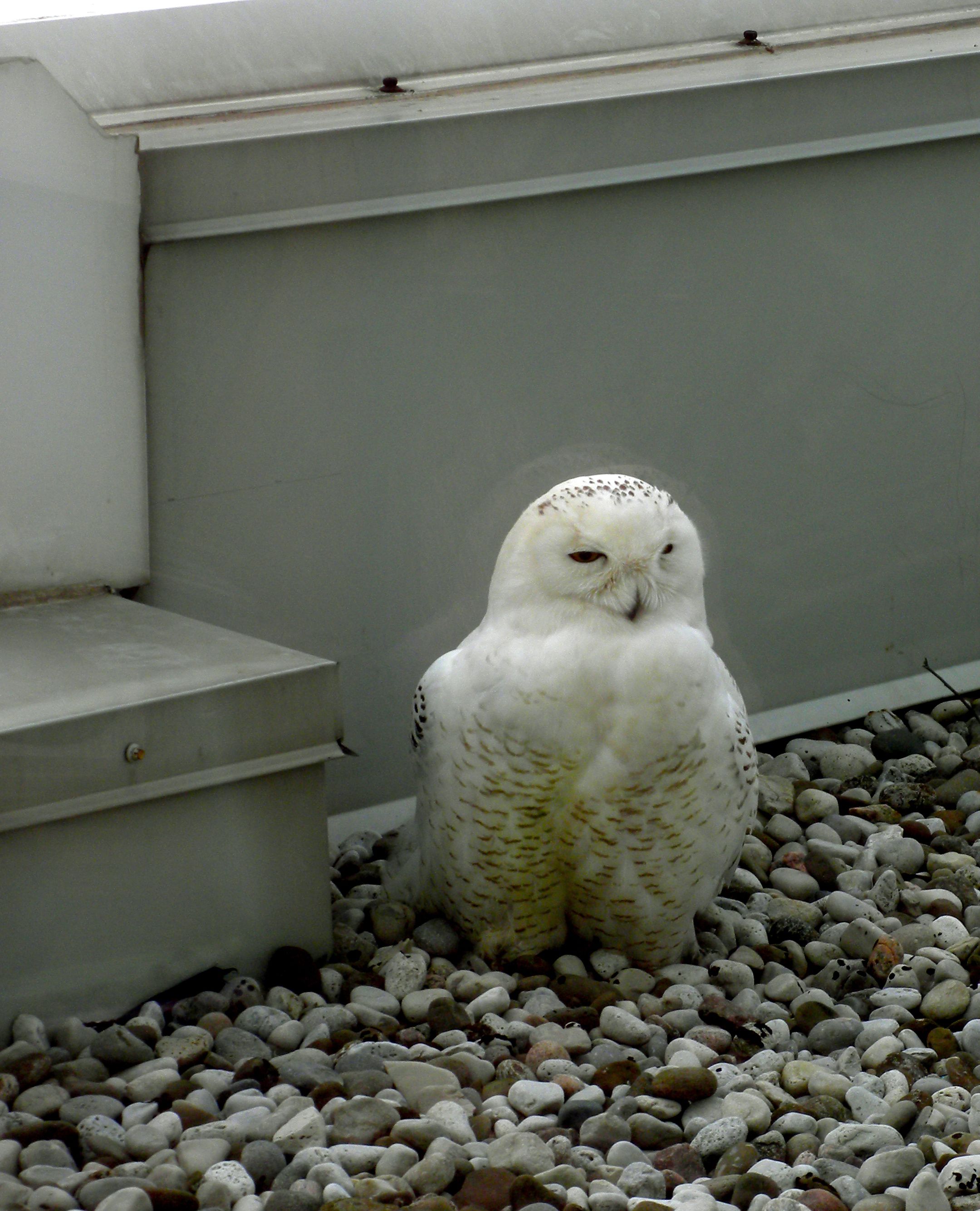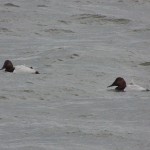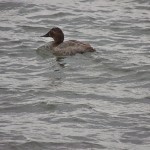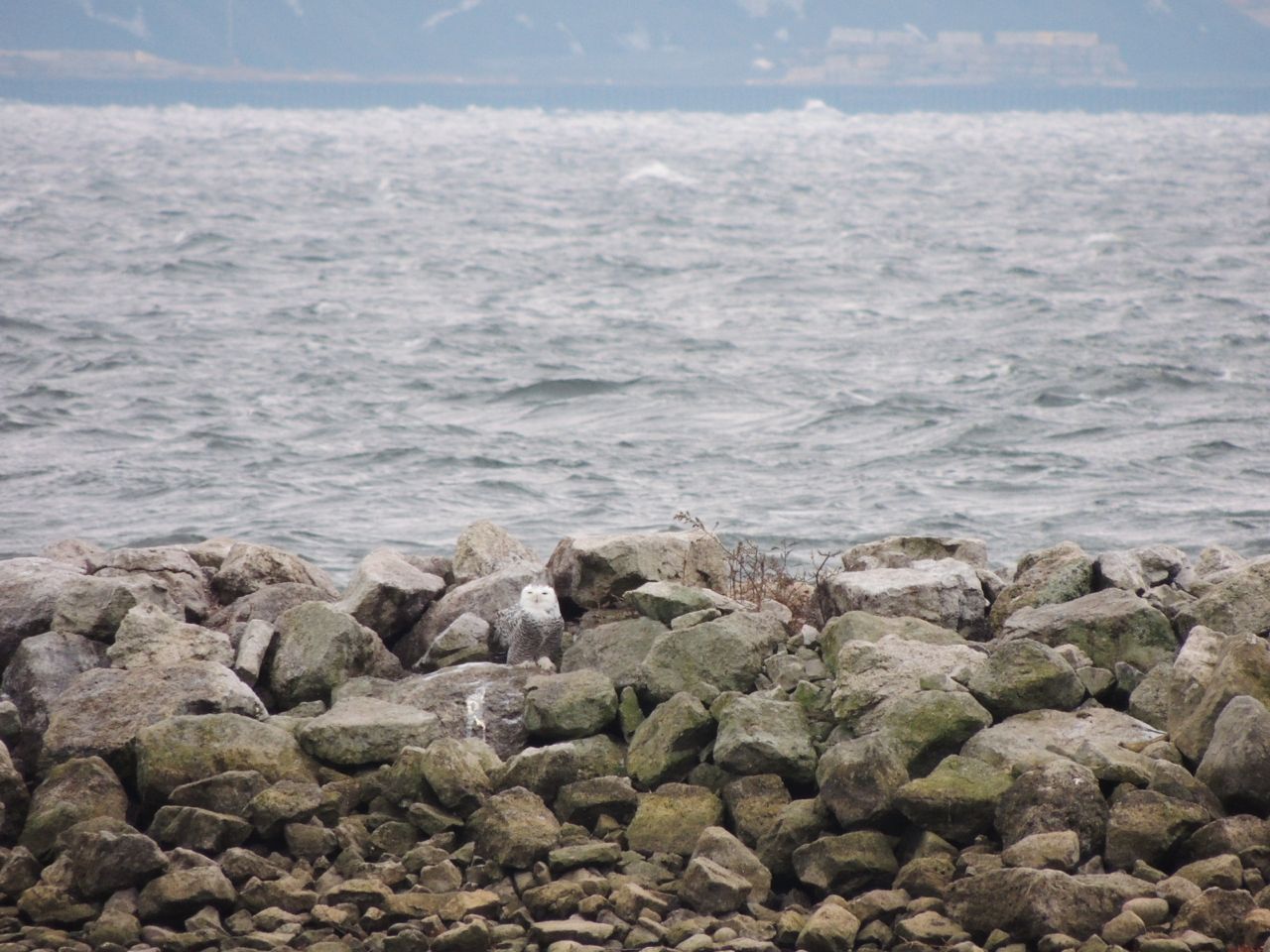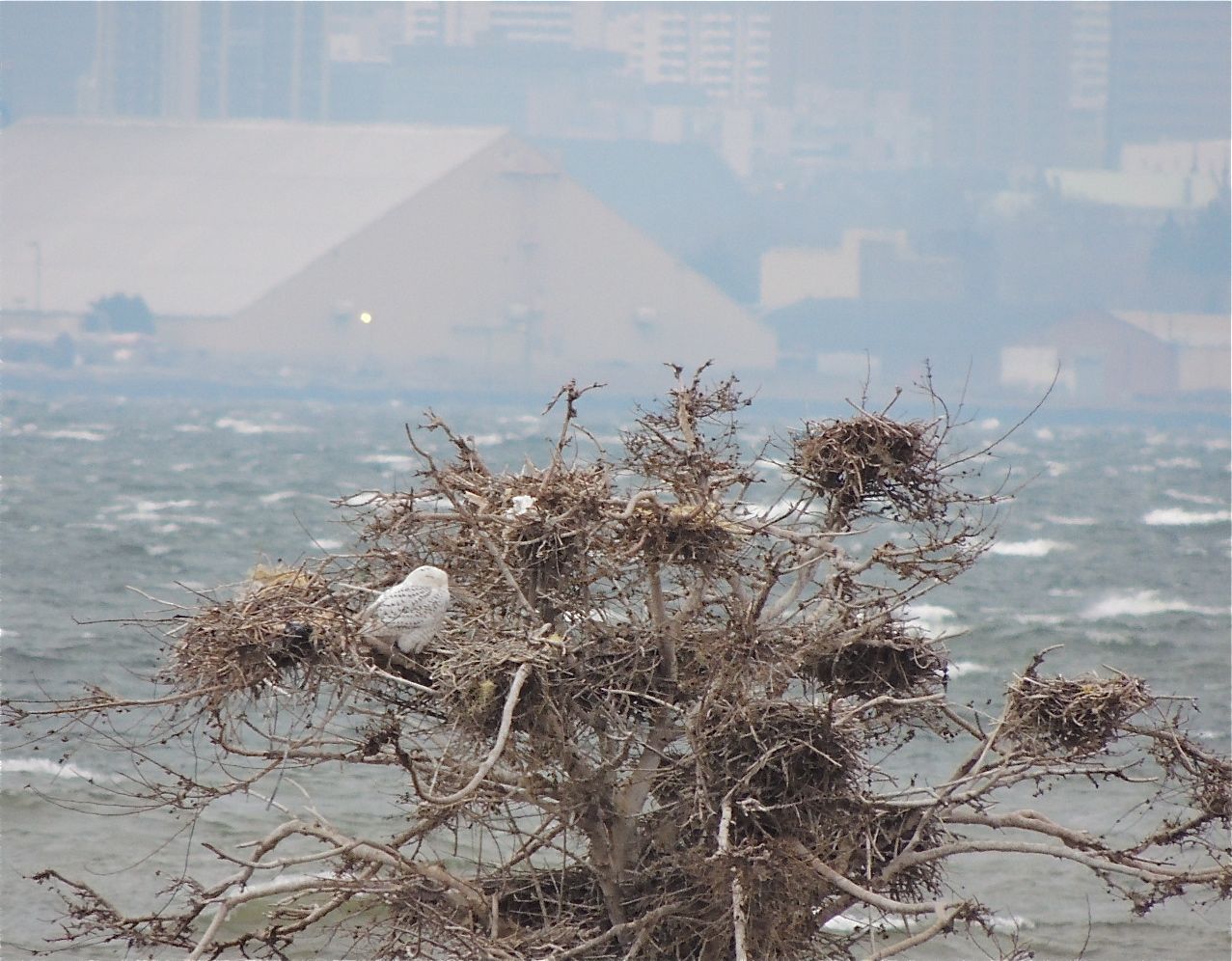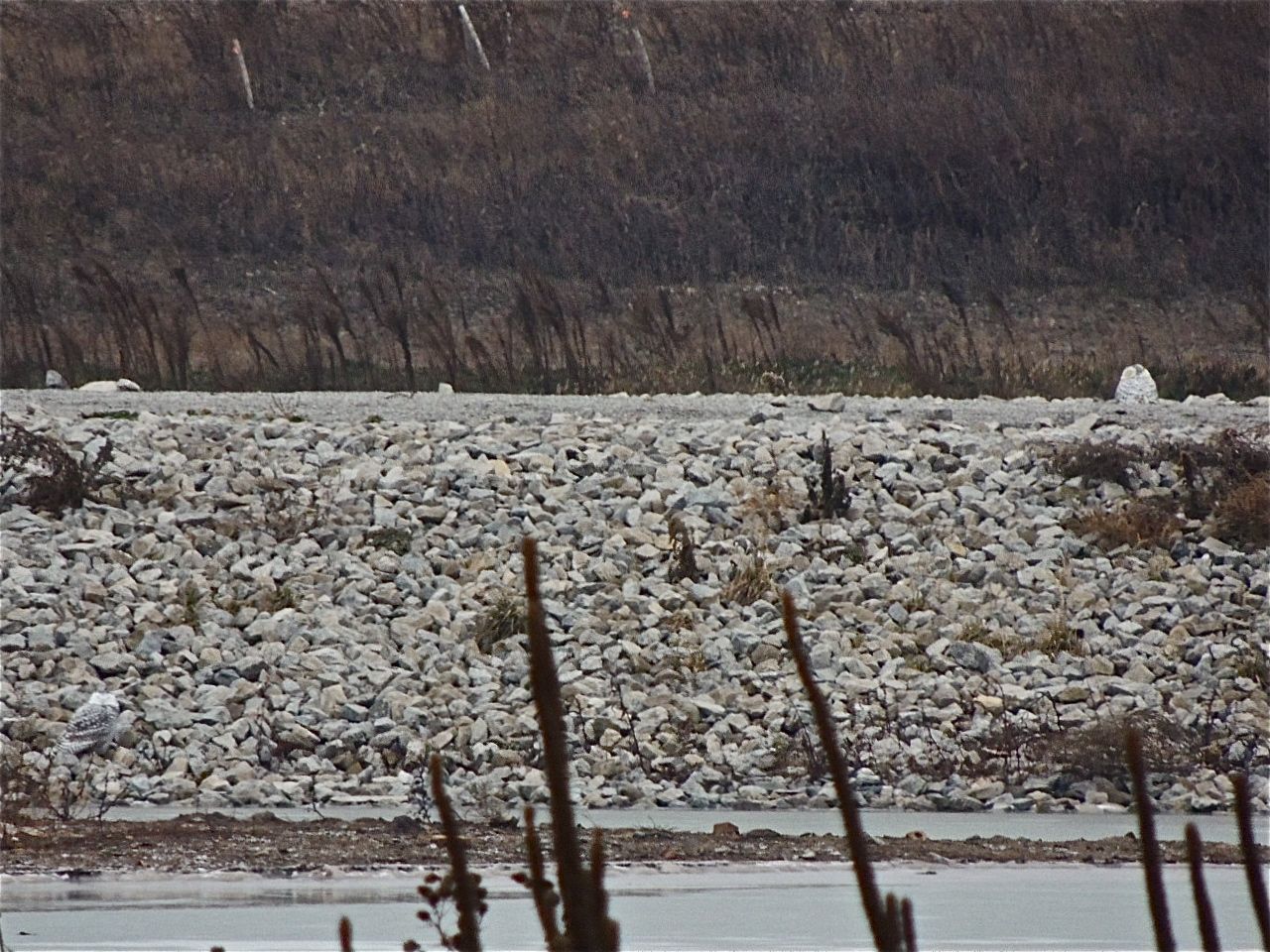20 December 2013. Burlington ON. In my admittedly distorted view of the seasons, spring starts right after Christmas, right after the winter solstice really; so any day now. Call it a self-deception if you like, but my arguments for my viewpoint have merit: starting two days from now daylight length starts to increase; with increasing daylight comes more sunshine; with sunshine comes warmth; and with warmth comes spring. What more convincing do you need?
The forgoing is a digression whose only relevance is to support the observation that today could hardly have been gloomier. It’s as good as the shortest, lowest-light day of the year, we are under a heavy overcast and a very fine drizzle makes visibility about as poor as it can be. But notwithstanding the many reasons to bury my head under a cushion, I took a detour along a quiet road looking for birds, and to my delight, came across a frenzied abundance of American Robins feeding on honeysuckle berries. The pleasure of so many robins, some half-heartedly whispering songs, busily feeding among in the colourful branches of the honeysuckle was a delight, almost a Christmas card moment; certainly a Bird of the Day moment.
While it is generally held that Robins leave us for the winter, it’s not quite true. I’m sure many do make their way into the gentler climes of southern states, but hundreds remain around here. They retreat into our many sheltered valleys, places where food is relatively plentiful and winter storms merely roar overhead, rather than sweep, scour and glaze the land. And here was a flock of robins, perhaps a hundred strong, they’d found Tartarian Honeysuckle bushes that were covered with masses of scarlet berries.
Conventional wisdom has it that our frugivorous bird species (robins, waxwings and mockingbirds for example) avoid the berries of Tartarian Honeysuckle and European Buckthorn as distasteful and view them as last-resort food. Maybe… or maybe since both are invasive plant species they’re not immediately and instinctively recognized for their food value, especially amid the fruitful abundance of late summer and fall.
Coming back to the matter of the gloom of the day, I took dozens of pictures but in such low light the camera was hard pressed to produce crisp images. Here’s a couple.
(But only visible if you’re on the website, not if you’re reading this as an email.)
After the robins I stopped at our nearby waterfowl-rich marina, admired a number of Tundra Swans, Mallards, American Coots, Common Goldeneye, a winter-plumage Horned Grebe and several White-winged Scoters who had ventured too close to shore for their comfort. Their panic is evident in the photo below.






